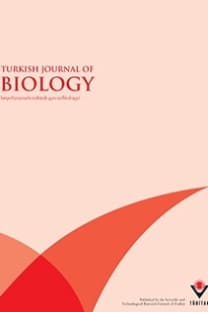Antimicrobial Activities of the Extracts of Marine Algae from the Coast of Urla (İzmir, Turkey)
Methanol, acetone, diethyl ether, and ethanol extracts of 11 seaweed species from the coast of Urla were tested in vitro for their antimicrobial activities against Candida sp., Enterococcus faecalis, Staphylococcus aureus, Streptococcus epidermidis, Pseudomonas aeruginosa, and Escherichia coli with the disc diffusion method. Diethyl ether was the best solution for extracting the effective antimicrobial materials from the algae species used in this experiment, with the exception of D. linearis, for which ethanol was the most effective extraction solution. Diethyl ether extracts of fresh Cystoseira mediterranea, Enteromorpha linza, Ulva rigida, Gracilaria gracilis, and Ectocarpus siliculosus showed effective results against all test organisms. However, diethyl ether extracts of some species, such as Padina pavonica, Colpomenia sniosa, Dictyota linearis, Dictyopteris membranacea, Ceramium rubrum, and Acanthophora nojadiformis, gave different results. A significant difference in antimicrobial activity was not observed between the acetone and methanol extracts of each alga. In addition, as a result of the comparison of dried and fresh extract antimicrobial activity, it was found that all test organisms were more sensitive to fresh extracts of the algae. Although fresh extracts of G. gracilis, D. linearis, and E. siliculosus inhibited the tested bacteria and yeast, their dried extracts had no inhibition activity on either Gram-negative or Gram-positive bacteria.
Antimicrobial Activities of the Extracts of Marine Algae from the Coast of Urla (İzmir, Turkey)
Methanol, acetone, diethyl ether, and ethanol extracts of 11 seaweed species from the coast of Urla were tested in vitro for their antimicrobial activities against Candida sp., Enterococcus faecalis, Staphylococcus aureus, Streptococcus epidermidis, Pseudomonas aeruginosa, and Escherichia coli with the disc diffusion method. Diethyl ether was the best solution for extracting the effective antimicrobial materials from the algae species used in this experiment, with the exception of D. linearis, for which ethanol was the most effective extraction solution. Diethyl ether extracts of fresh Cystoseira mediterranea, Enteromorpha linza, Ulva rigida, Gracilaria gracilis, and Ectocarpus siliculosus showed effective results against all test organisms. However, diethyl ether extracts of some species, such as Padina pavonica, Colpomenia sniosa, Dictyota linearis, Dictyopteris membranacea, Ceramium rubrum, and Acanthophora nojadiformis, gave different results. A significant difference in antimicrobial activity was not observed between the acetone and methanol extracts of each alga. In addition, as a result of the comparison of dried and fresh extract antimicrobial activity, it was found that all test organisms were more sensitive to fresh extracts of the algae. Although fresh extracts of G. gracilis, D. linearis, and E. siliculosus inhibited the tested bacteria and yeast, their dried extracts had no inhibition activity on either Gram-negative or Gram-positive bacteria.
___
- Perez RM, Avila JG, Perez G et al. Antimicrobial activity of some American algae. Journal of Ethnopharmacology, 29:111-18, 1990.
- Norris JN, Fenical WH. Natural products chemistry: uses in ecolo- gy and systematics. In: (M.M. Littler and D.S. Littler, eds) Hand- book of phycological methods. Ecological field methods: macroal- gae. Cambridge University Press, Cambridge. pp. 121–147, 1985.
